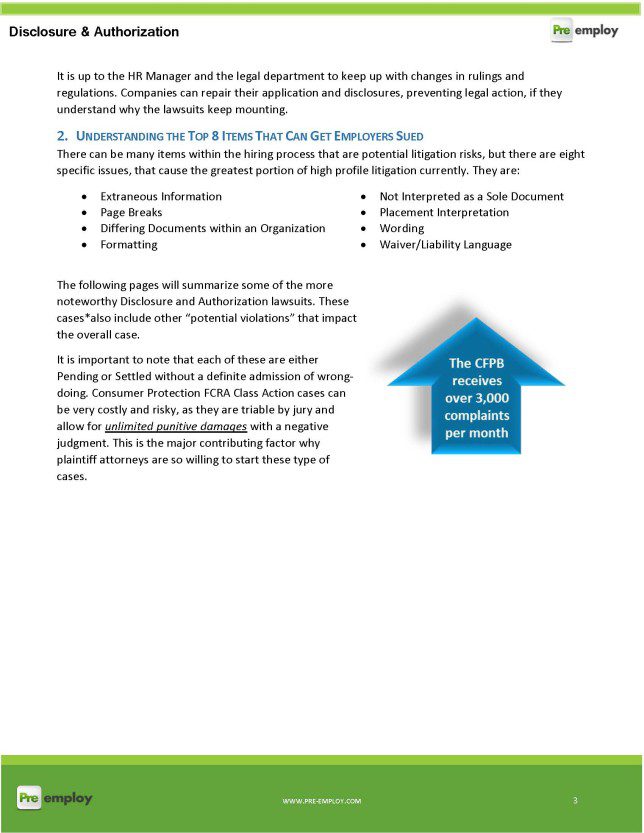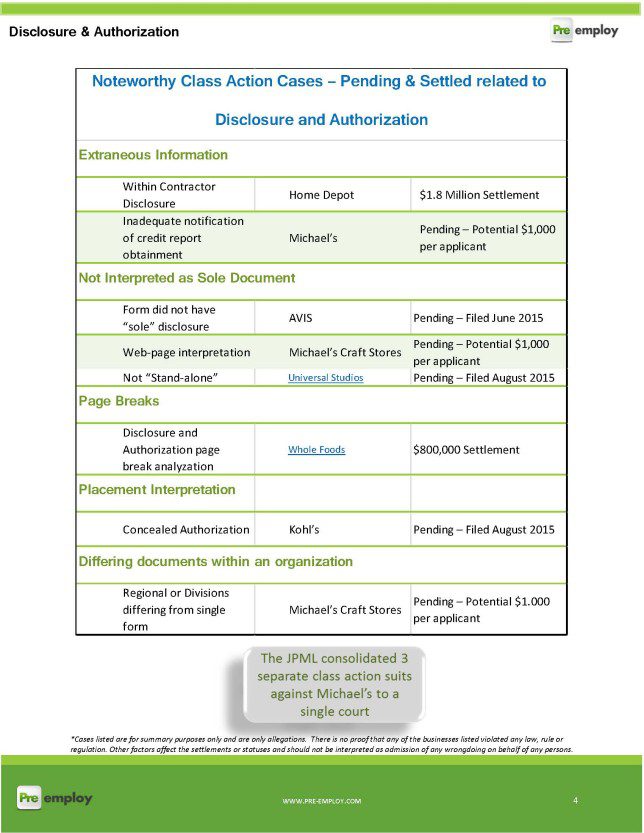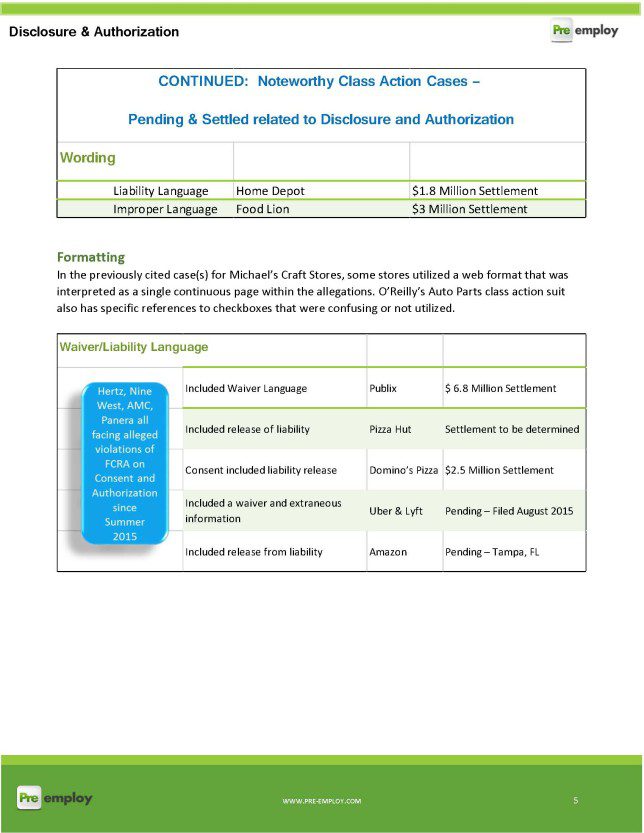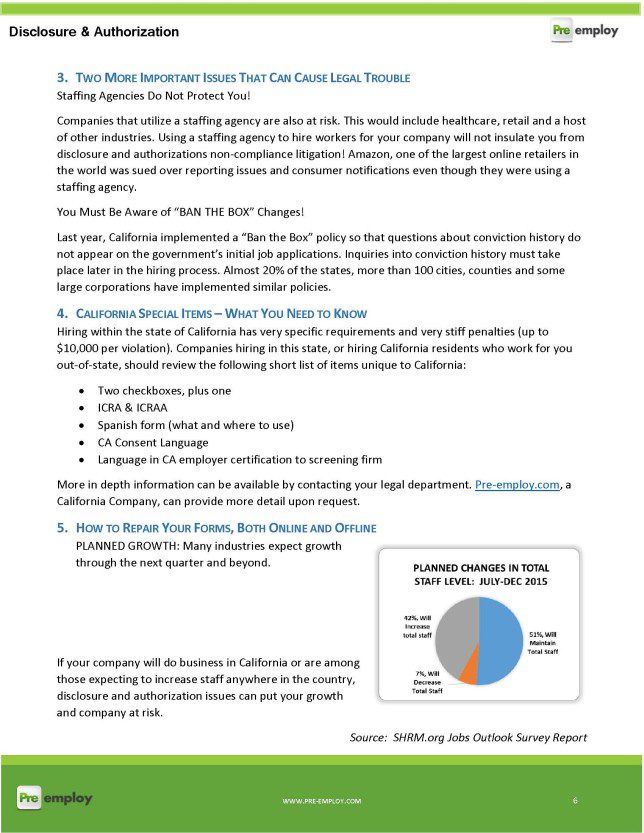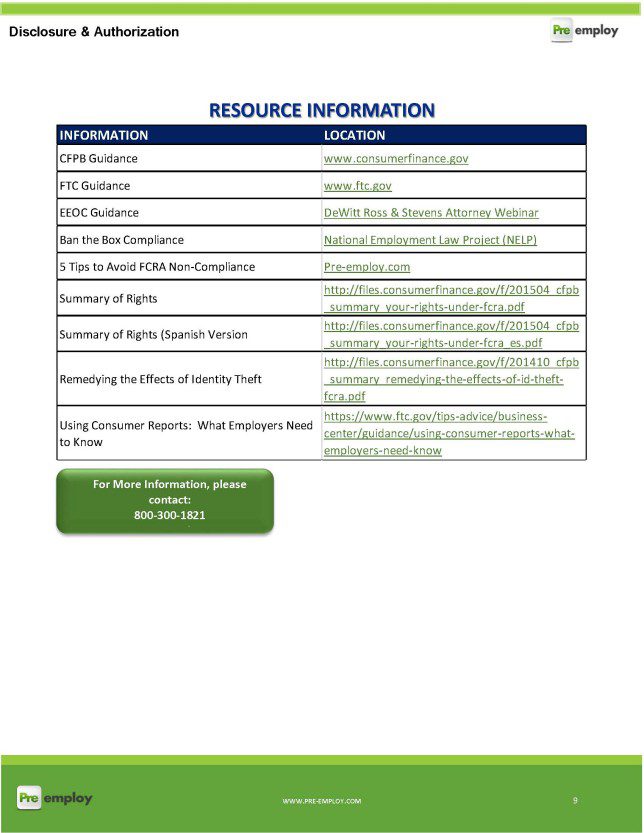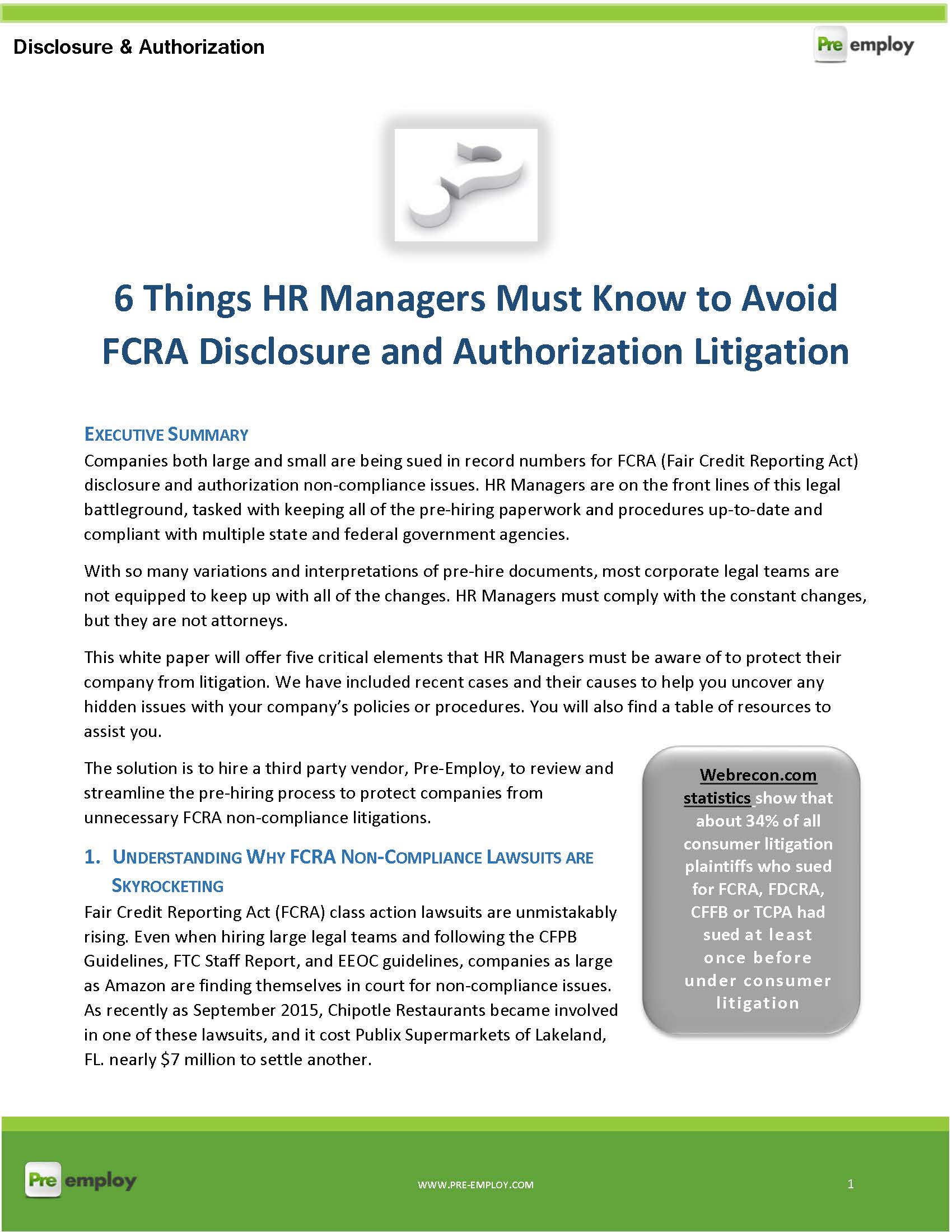Preventing customer chargebacks:
Addressing non-compliant labels and GS1-128 compliance
EXECUTIVE SUMMARY
In this Internet-based, consumer-driven world we operate in, streamlined operations, tighter control on operating expenses, and real-time product availability are critical to a company’s success. This evolution in business has caused the frequency of vendors rejected shipments due to non-compliant labels, to increase.
When you ship a pallet of merchandise to your trading partner and the label is unreadable not only will they charge you for the return shipping, but also the chargeback fees on each item on the pallet. These charges impact your margin, but it has an adverse effect on your trading partner’s ability to maximize their revenue due to lost sales. What if your labels are damaged or misprinted so frequently that you are losing 2% to 10% of net profits every month? GS1-128 Label Related Chargebacks are a serious concern and expense to manufacturers and shippers around the world. The good news is that most of these types of losses are preventable. This report will explain the different issues that cause “non-compliance” issues with GS1-128 barcode labels then offer solutions to correcting those problems.
INTRODUCTION
Barcode labels are an integral part of modern shipping around the world. They facilitate faster movement of goods from manufacturing to the e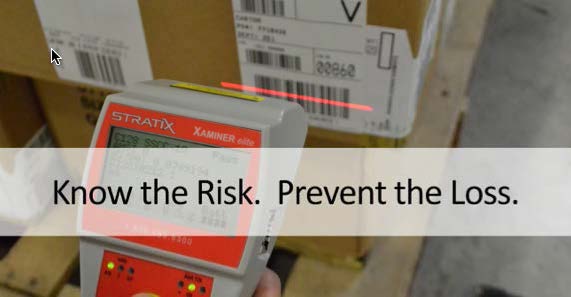 nd user by encoding information on labels that are unique to each package. Individual packages are tracked from anywhere to anywhere in real time based upon the information contained on the GS1-128 barcode labels.
nd user by encoding information on labels that are unique to each package. Individual packages are tracked from anywhere to anywhere in real time based upon the information contained on the GS1-128 barcode labels.
Role of bar codes in the supply chain are:
- Designed to allow the user to capture useful data at a rapid pace with a high degree of accuracy
- Necessary for point of sale scanning
- Integral part of the EDI process by identifying product on ASN’s
- Used for automated receiving of product in Trading Partner DC’s
When barcode labels are unreadable, they cause backups in the supply chain and costly charge-backs to your company.
The Actual Costs of Label Non-Compliance
What do bar code related chargebacks mean to your bottom line? A recent report from California Distribution, Inc. states:
“Compliance with retailers’ shipping guidelines has become challenging for vendors of consumer goods, particularly in light of the increasing financial penalties for non-compliance. Commonly known as chargebacks, these fines typically shave 2% to 10% of a manufacturer’s overall revenue (National Chargebacks Management Group).”
Here are a few actual examples of non-compliance fee schedules from three U.S. retailers.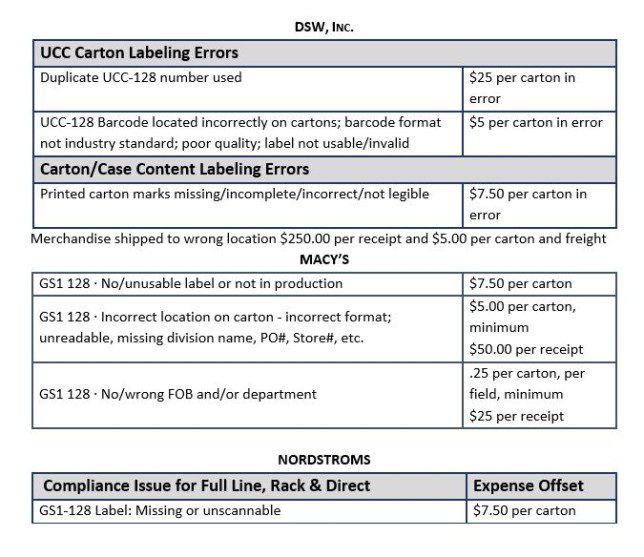
Intangible Costs of Non-Compliance
Building a successful business relationship takes time, and people are learning to trust each other. Each time your goods arrive at your trading partner’s dock and are unable to be processed, your company loses credibility.
Because the goods will be delayed reaching the sales floor it creates customer dissatisfaction. It means lost sales opportunities for your client and faster markdowns. If the problem persists, it will mean decreased sales opportunities for your company.
How do we eliminate chargebacks?
To eliminate label issue chargebacks, we must understand the problem, implement corrective actions and then monitor the process to avoid future issues. First, we must understand the problem. Let’s take a look at the reasons barcode labels become unscannable and unusable.
Direct Causes of Unscannable Barcode Labels and GS1-128 label pitfalls to avoid
There are three leading causes of label issues, human error, printer error, and poor quality media.
Human error is one of the leading causes of label malfunctions. Carelessness or ignorance concerning the importance of label integrity contributes to these causes. Examples of human error are:
- Misplacing label such as around corner of box
- Multiple labels or placing clear tape over the barcode rendering it unreadable
- Marking over the label
- Incorrect code format
Printer error contributes to work slowdowns or even stoppages. The printer head is usually the primary source of the problem. Many times this is due to a lack of simple routine maintenance and cleaning. The resulting dirt build-up or damage causes:
- Defects in the barcode quality
- Lines through the code rendering them unreadable
Poor quality media can result in inferior barcode images right from the start. Other issues can be the lack of durability of the label especially if they are subject to rough handling or weather conditions. The effects of poor quality media are:
- Smearing or smudging of barcode
- Labels wrinkle easily
- Barcodes not sharp making them unreadable
These photos below show examples of actual labeling issues.

Anytime you suffer a chargeback, request documentation from your Trading Partners such as pictures, verification test reports, and samples of the labels that did not scan, to confirm the issue.
Four-Step Solution to Overcoming Label “Non-Compliance” Problems
Solving label compliance issues is a four step process.
- Step 1 –Validate Bar Code Format, Encodation, Size & Location are Correct
- Step 2 –Verify Print Quality of Bar Codes Meet Minimum Acceptable Levels
- Step 3 –Ensure Media (i.e., labels & ribbons) & Hardware Being Used are Ideal for Producing High-Quality Bar Codes
- Step 4 –Monitor Hardware Performance with Regular Maintenance
Step 1 – Proper Barcode Validation
Meeting your Trading Partners’ requirements for labeling means ad hering to the standards published in their labeling guidelines. These guidelines ensure uniformity and placement of the labels from the many vendors who supply them. A central issue is with fixed mount scanners. Improperly placed labels, cannot be read by the scanner, resulting in a chargeback. Labels must be positioned in the specified location on the box or pallet.
hering to the standards published in their labeling guidelines. These guidelines ensure uniformity and placement of the labels from the many vendors who supply them. A central issue is with fixed mount scanners. Improperly placed labels, cannot be read by the scanner, resulting in a chargeback. Labels must be positioned in the specified location on the box or pallet.
Other preventable issues causing label rejections include formatting, label size and encoding.
An incorrect Bar Code Format can be produced by using the improper version. Make sure that you use only the SSCC-18 version of the GS1-128 barcode and do not use a Code 128 Standard format. You can tell visually because the SSCC-18 version always starts with an Application Identifier of (00). Be sure to verify the size of the printed bar code meets your Trading Partner’s specifications. Also, verify that the encoded numbers match readable human info below the bar code.
sure that you use only the SSCC-18 version of the GS1-128 barcode and do not use a Code 128 Standard format. You can tell visually because the SSCC-18 version always starts with an Application Identifier of (00). Be sure to verify the size of the printed bar code meets your Trading Partner’s specifications. Also, verify that the encoded numbers match readable human info below the bar code.
Step 2 – Verify Print Quality of Bar Codes Meet Minimum Acceptable Levels
The industry standard for label acceptability is ANSI Grade of “C”, but some retailers, 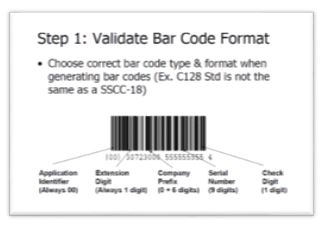 such as Macey’s, require a minimum of an ANSI Grade of “B”. The ANSI (American National Standards Institute) grade is made up of 9 parameters that grade the print quality of bar codes. These parameters are Decodability, Reference Decode, Element Determination, Defects, Quiet Zone, Symbol Contrast, Edge Contrast Minimum, Modulation, & Reflectance Minimum.
such as Macey’s, require a minimum of an ANSI Grade of “B”. The ANSI (American National Standards Institute) grade is made up of 9 parameters that grade the print quality of bar codes. These parameters are Decodability, Reference Decode, Element Determination, Defects, Quiet Zone, Symbol Contrast, Edge Contrast Minimum, Modulation, & Reflectance Minimum.
Most people will not need the technical aspects of these parameters, they just need to know the label meets or exceeds expectations to prevent chargebacks.
To do this, you must have a verification system in place using one or more verifiers.
Scanning is not the same as verifying so a barcode scanner will not give you the information you need to determine if a label will meet acceptable levels of compliance. All labels should be monitored on an ongoing basis using a Full ANSI verifier and be scanned ten times from top to bottom to obtain Average ANSI Grade. Verification tests should cover the beginning, middle, & end of each print run. Use a GS1-128 label Expert to assist if you are unfamiliar with verification requirements and the various barcode specifications.
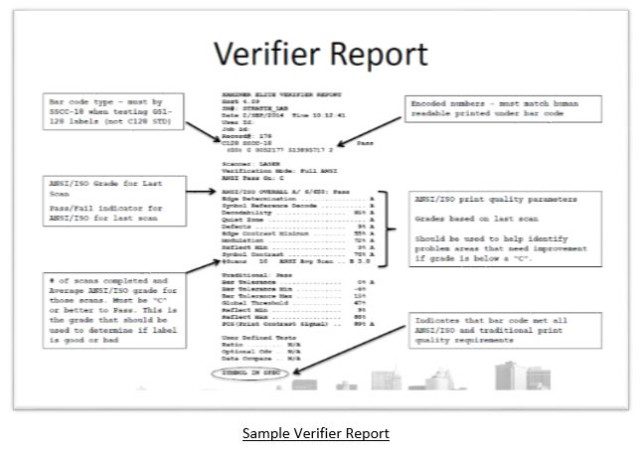
Step 3 – Appropriate media is a required investment
The media (i.e., labels & ribbons) and the printing hardware should be the best quality to produce bar code labels that continuously meet or exceed standards.
Label Stock
- When using direct thermal labels, a “premium coated” label stock should be chosen
- Premium coated direct thermal labels reduce wear on printheads and produce higher quality barcodes
- Always avoid using “UPS” label These are unique NIR labels that cause no-read problems on visible red scanners
Transfer Ribbons
- When thermal transfer printing, a thermal transfer ribbon with a higher resin content should be used to resist smudging. Avoid ribbons with a high wax content because they smudge easily.
- Be sure to choose a ribbon and label combination that perform well together
Direct Thermal vs. Thermal Transfer
- Most printers support both DT and TT printing
- Less downtime and waste with DT
- DT labels can’t be smudged
- DT labels are more expensive but have no ribbon
- TT labels are less expensive but require ribbon
- Wax ribbons = less expensive but smudge easily
- Resin ribbons = more expensive but less likely to smudge
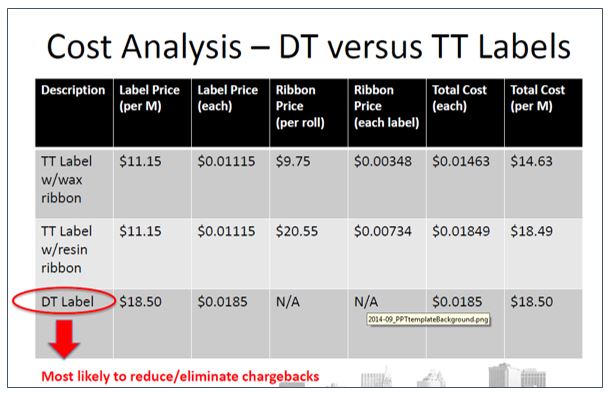
Preventing chargebacks due to printing errors can be as simple as selecting the correct label stock and transfer method. Lower your risk of loss by investing in higher quality media. Inferior products can lead to poor quality bar codes and faster print head “burnout” resulting in production downtime.
Environmental conditions such as sunlight, temperature, and abrasion can impact label quality after being printed, but before being scanned. Seek advice from an industry expert if you are unsure which products are right for your application.
Printer Hardware
Printers are the backbone of your barcode labeling and shipping operation. Without them, there is no shipping. So when selecting a barcode printer make sure that it will keep up with current and future production, especially if you are running a 24/7 operation.
- Printing methods such as thermal transfer or direct thermal are recommended (not ink types)
- Printers should be high quality and designed to produce the volume needed (i.e., “industrial” printers designed for 24/7 use)
- Seek advice from an industry expert if you are unsure which products are right for your application
Step 4 – Monitor Hardware Performance with Regular Maintenance
Printer maintenance is one area that is crucial to the continuous operation of the printer. Printer heads and rollers will slowly become contaminated with adhesives or debris, and should be cleaned with every ribbon or label roll change. It is usually as simple as wiping with an alcohol swab, however, neglecting this procedure can result in degraded barcode quality. Also, monitor the printer’s performance with a barcode verifier. Verification reports alert you to costly potential chargebacks before they leave your facility.
Other maintenance tips include:
- Operators should train on how to make adjustments to settings (heat, speed, pressure) so they can optimize barcode quality
- Maintenance should be performed based on manufacturer’s recommendations
- Use certified technicians for service and preventative maintenance
- Printheads should be replaced at regular intervals.
- Upfront maintenance investments extend the longevity of the printer and can eliminate costly non-compliant labels.
- Monitor print quality with a barcode verifier
The Barcode Verifier is Your Best Defense against Chargebacks
One of the most important solutions to chargebacks is the constant monitoring of the print quality of the barcodes. As previously mentioned, the quality can degrade due to buildup on or damage to the print head. A barcode verifier will scan and identify print quality issues. The key is to find problems before they leave your business. There are several barcode verifiers available depending upon the volume and type of printing. They can be a desktop, handheld or integrated with your printer and verify 1D and 2D codes to ANSI/ISO specifications.
Risks of Not Verifying:
- Lost or misinterpreted information
- Increased labor costs
- High dollar re-labeling costs
- Increased errors
- Rejected shipments
- Customer dissatisfaction
- Retail vendor compliance chargebacks
- Mis-shipments
Barcode Compliance Solutions
As a solution provider, Xxxxxx works with both merchandise suppliers and retailers to assist in resolving label non-compliance issues. While this certainly isn’t a new topic, it continues to be an ongoing problem for both sides. It’s important to understand what causes a barcode to become unscannable and then how to fix it. For over 30 years, the barcode experts at Xxxxxx have been assisting our customers in identifying their problems and providing solutions. Know the Risk. Prevent the Loss. Get protection from the experts.
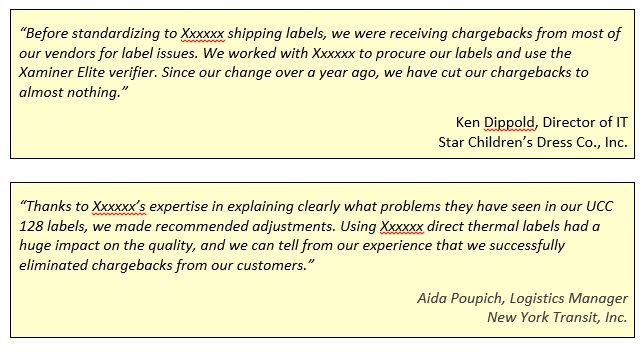
Case Studies Regarding GS1-128 Label Related Chargeback

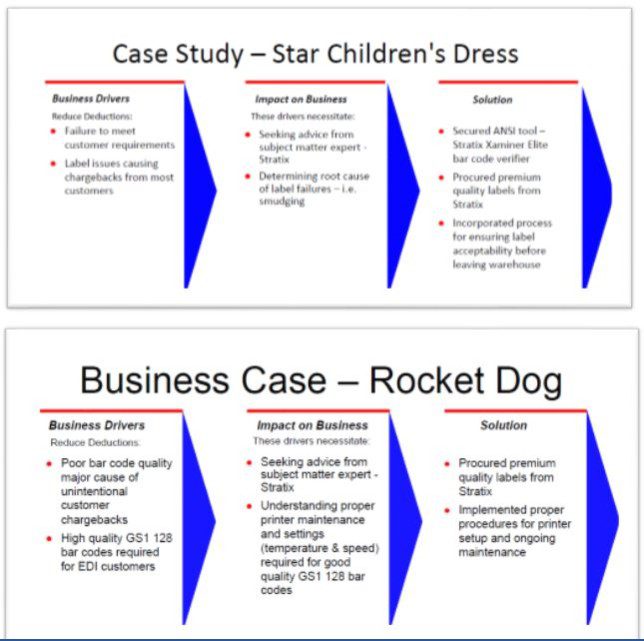
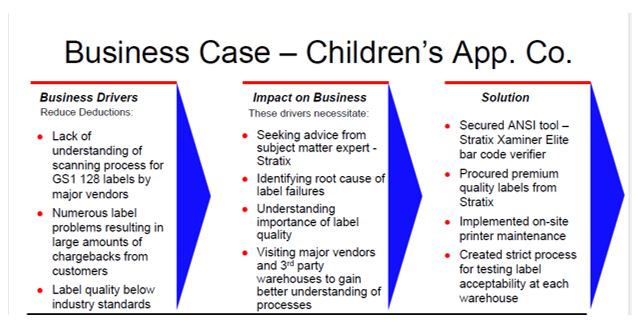
Remember the Advantages of Quality Barcodes
Bar codes were designed to allow the user to capture useful data at a rapid pace with a high degree of accuracy. Quality barcodes:
- Ensure that the product arrives on the sales floor promptly
- Reduce/eliminate chargebacks from Trading Partners
- Help you become a valued supplier/vendor
If your bar codes do not scan, then you have defeated their purpose!
Xxxxxx Label Compliance Solutions help suppliers determine Trading Partners’ requirements and use barcode technologies to mitigate chargebacks and profit loss related to these guidelines. Our proven quality control process includes cross-checks in several critical areas:
- Supplier Labels
- Print Quality
- Media & Hardware
- Printer Performance
CONCLUSION
Free Assessment to Plan Compliance Improvements
Xxxxxx offers a free assessment for your company. We will discover the hidden and not-so-hidden problems that create non-compliance issues with your labeling system. Then, we can provide solutions to reduce dramatically and eliminate chargebacks due to labeling issues. Understand the risks and seek advice from Xxxxxx on how to prevent unnecessary losses associated with bad bar codes.
About Xxxxxx Corporation
Xxxxxx Corporation was founded in 1983 and headquartered in Norcross, Georgia. They are a Mobile Solutions Integrator, who has partnered with Motorola & Zebra Technologies to provide complete label compliance and verification solutions to companies all over the world.
Xxxxxx Barcode Compliance Retail Partners include Macy’s, The Home Depot, Lowe’s, Michaels Stores, & Sam’s Club, Ace Hardware, Sports Authority and Lord & Taylor to name a few.
Xxxxxx achieved a 300% growth rate – awarded in Inc. 500 as fastest growing companies for, 2006, 2007, 2011 & 2012. SAP – Xxxxxx approved as SAP Alliance Service Partner – 2012
Apple – Xxxxxx approved as Value Added Reseller and Authorized Service Provide 2012
For more information about their services or to learn more about the Xaminer Elite Series of Portable Bar Code Verifiers please visit www.XxxxxxCorp.com.
White paper For A Legal Firm

